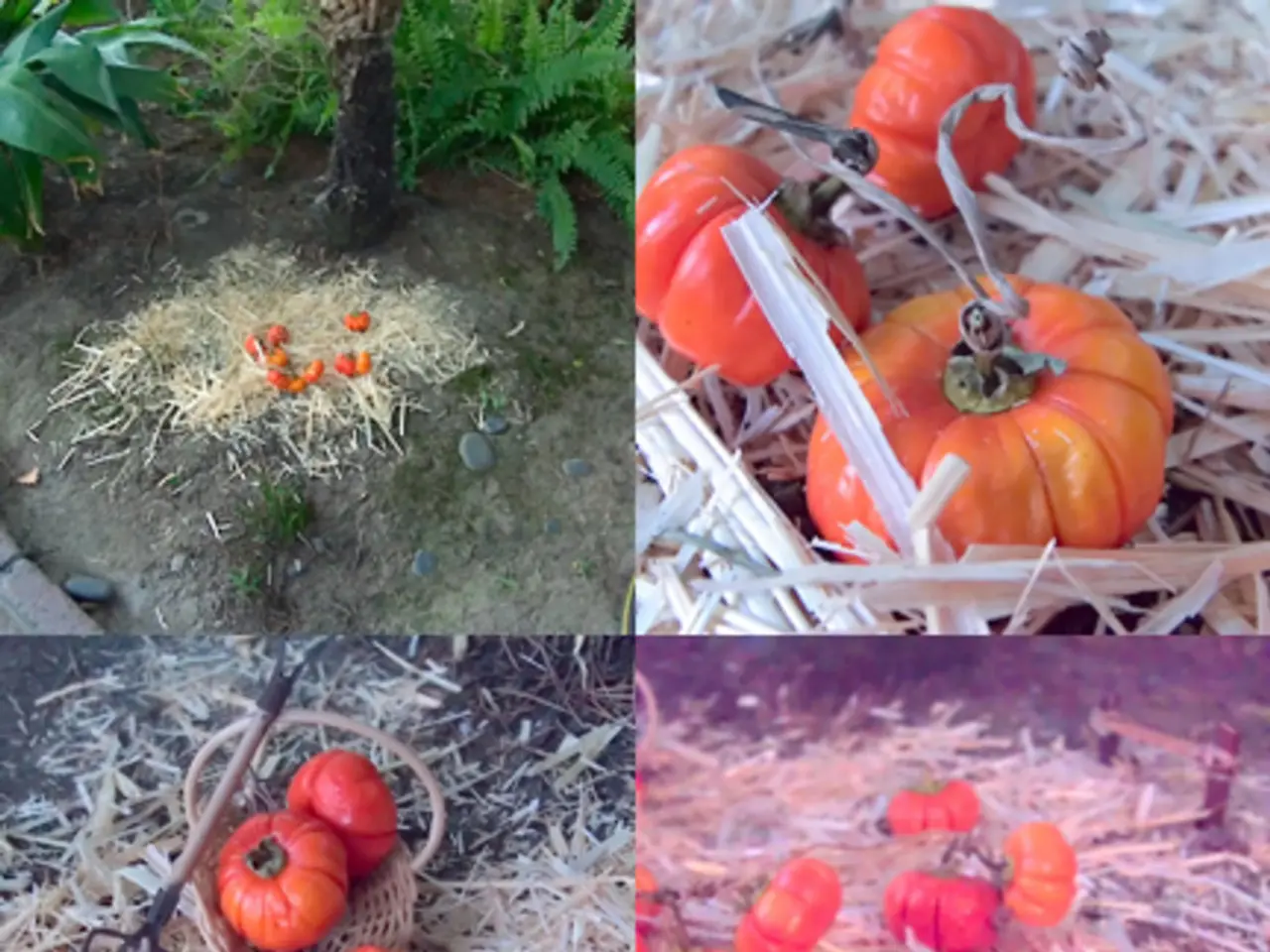Cultivating pumpkins and squash: A step-by-step guide to producing your own autumnal gourds
Growing climbing pumpkins and winter squash can be a rewarding experience, as these vigorous vines offer not only delicious produce but also serve as natural mulch and weed barriers. Here's a guide to help you get started.
Firstly, it's essential to prepare well-draining soil with plenty of sunlight and space. Sow squash and pumpkin seeds roughly a month before the last frost, ideally in 9cm pots with a pair of seeds in each. Once the seedlings have germinated, thin out the weakest of the two.
If you're growing them for ground cover, let the vines spread naturally on the ground, or train them vertically on supports like trellises or arches. This method saves space and improves air circulation. For ground cover growth, keep the soil consistently moist and fertilize regularly, as these plants are heavy feeders. You can also interplant companion plants like beans, which fix nitrogen in the soil, supporting healthy vine growth.
For more controlled growth, use a sturdy trellis, arbor, or arch. Train the vines upward using strong twine, securing the plant every foot or so to support forming pumpkins and squash fruits. This method optimizes airflow, reduces fungal diseases, and makes harvesting easier.
Removing subsequent flowers or fruit is beneficial for pumpkins and winter squash, as it helps concentrate growth for two to four fruits per plant. Similarly, removing leaves that are shading plants near the end of the season can help ripening.
As the fruits grow, rotate them gently to ensure all sides have some sun exposure. Harvesting squashes and pumpkins with a bit of stalk on either side of the cut prevents rot. If you're short on space, you can plant pumpkins and winter squash closer if they are trained to climb a short fence or trellis, or around themselves in a spiral.
When it comes to varieties, 'Turk's Turban' is a standout with distinctively shaped fruits, green, white, and orange stripes, and is particularly good for stuffing and cooking whole. 'Berrettina Piacentina' is another winter squash with knobbly, steel-grey green skin, deep-orange flesh, and a fantastic flavor. 'Invincible' is an improved version of 'Crown Prince', while 'Harrier' F1 is a butternut squash bred for our climate with a sweet flavor, good storage, and a short growing period.
For Halloween, 'Jack O'Lantern' is best for carving, with good orange flesh and a decent size. For smaller pumpkins suitable for soups and pies, 'Baby Bear' is a perfect choice, with semi-hull less seeds that can be toasted for snacks. For those who want to break records, 'Atlantic Giant' (also known as 'Dill's Atlantic Giant') is a large pumpkin (up to 780kg).
Lastly, remember that winter squash and pumpkins may need to be covered with cloches in the beginning due to their susceptibility to cold weather. Indoor-raised seedlings need to be hardened-off before planting out. Once ripe, they need to be stored somewhere warm to cure for several weeks to improve flavor and prolong storage. Pumpkins can go in a warm greenhouse or garage for storage.
With these tips, you're ready to embark on a rewarding journey of growing climbing pumpkins and winter squash. Happy gardening!
- Preparing well-draining soil with adequate sunlight and space is crucial for growing climbing pumpkins and winter squash, as these plants thrive in such conditions.
- Sow squash and pumpkin seeds in 9cm pots, planting a pair of seeds in each, about a month before the last frost. As the seedlings grow, thin out the weakest of the two.
- For ground cover, let the vines spread naturally on the ground, or train them vertically on supports like trellises or arches to save space and improve air circulation.
- To optimize airflow, reduce fungal diseases, and make harvesting easier, use a sturdy trellis, arbor, or arch and train the vines upward using strong twine, securing the plant every foot or so.
- When it comes to varieties, 'Turk's Turban' is a unique choice with its distinctively shaped fruits, while 'Harrier' F1 is a butternut squash bred for our climate with a short growing period and sweet flavor. 'Baby Bear' is a perfect choice for smaller pumpkins suitable for soups and pies, with semi-hull less seeds that can be toasted for snacks.




